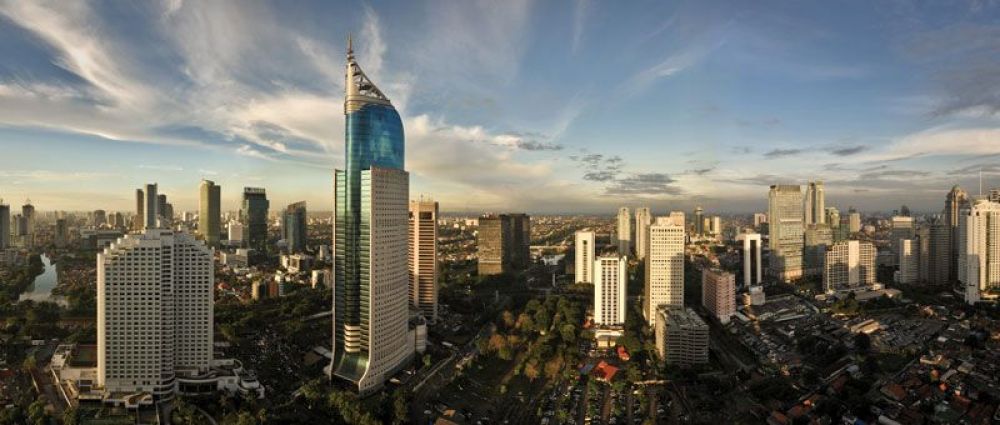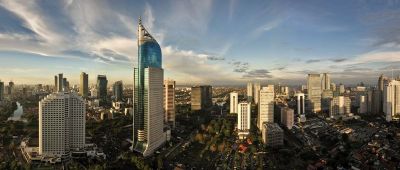

The National Monument (Monas) is one of Jakarta's most famous landmarks and a symbol of Indonesia's struggle for independence. Standing at over 130 meters tall, it offers panoramic views of the city from its observation deck. Within the base of the tower is the National History Museum, which showcases the history of Indonesia's fight for sovereignty with captivating dioramas. Visitors can take an elevator up to the observation deck to witness a breathtaking vista, which encapsulates both the historical and modern aspects of this bustling metropolis. The vast surrounding park, often filled with local families and joggers, is a pleasant spot for a stroll or picnic. The Monas is an emblematic site that provides insight into the nation's pride and history, making it a must-visit destination for those traveling to Jakarta.
Ancol Dreamland, also known as Taman Impian Jaya Ancol, is Jakarta's largest integrated tourism area, consisting of an amusement park, a beach resort, a marina, and a selection of hotels. It is an ideal getaway from the city's hustle and bustle, offering an array of activities such as theme parks like Dufan (Fantasy World) and Atlantis Water Adventure. Visitors can enjoy roller coaster rides, water-based activities, and live shows. Ancol Dreamland also boasts an oceanarium called SeaWorld Ancol, where families can learn about marine life and conservation. With a collection of restaurants, cafes, and leisure facilities, it is the perfect location to relax and enjoy a fun-filled day with family and friends. The diverse attractions mean that there's something for everyone, whether looking for thrill rides or just to unwind by the sea.
Taman Mini Indonesia Indah (TMII) or 'Beautiful Indonesia Miniature Park' is a culture-based recreational area located in East Jakarta. The park spans over 250 acres and serves as an epitome of the diverse cultures, traditions, and architectures of Indonesia's many islands. Visitors can explore authentic houses from provinces across Indonesia, each rich with its own heritage and unique designs. There are also museums, such as the Indonesia Museum and the Military Museum, where one can delve deeper into the nation's history. With gardens, bird parks, water parks, and a cable car, TM. Visitors can enjoy a glimpse of the entire archipelago through replicas and exhibitions which encapsulate the heart and soul of Indonesia, making it an educational as well as entertaining experience.
Step back in time with a visit to Jakarta's Old Town, locally known as Kota Tua. Famed for its colonial architecture reflecting its past under Dutch rule, the Old Town is a cobblestoned center of heritage buildings, museums, and cultural artifacts. It’s a lively hub where tourists can learn about the city's history, visit art exhibitions, or take in street performances. Notable landmarks include the Jakarta History Museum housed in the former Town Hall, the Wayang Museum dedicated to Javanese puppetry, and the Museum Bank Indonesia. One can explore the area by renting a colorful bike or simply by wandering around and soaking up the atmosphere. Street artists, antique markets, and quaint local cafes are part of its unique charm. Whether for historical insight or to enjoy the vibrant ambiance, Jakarta Old Town is a must-see attraction in the city.
The National Gallery of Indonesia offers a deep dive into the world of Indonesian art, housing over 1,700 works by prominent Indonesian and international artists. The Gallery serves as both a museum and an art center, showcasing paintings, sculptures, and installations, with collections that span traditional to contemporary art forms. Visitors can embark on a cultural journey that reflects the nation's history and societal changes through its art, with exhibitions frequently changing to display the depth and breadth of Indonesia's artistic talents. The institution aims to preserve, develop, and promote Indonesian visual arts, making it a crucial landmark for artists and art enthusiasts alike. Engaging exhibitions and various art-related activities, including workshops and seminars, are regularly conducted here, ensuring that every visit offers a new and enlightening experience.
Ragunan Zoo is a spacious zoological park located in South Jakarta, offering a pleasant escape from urban activity while providing a chance to discover Indonesia's diverse fauna, as well as animals from around the globe. Home to over 270 species and 3,000 animal specimens, the zoo's habitats are designed to imitate natural environments, from the dense forests of Sumatra to open savannahs. Notable exhibits include the primate center, an area dedicated to the conservation and study of Indonesia's native primates such as the endangered orangutan. The zoo also features a Children's Zoo, picnic areas, and boating lakes. It serves as an educational center, aiming to raise awareness about wildlife conservation, and offers an enjoyable day out for animal lovers and families. With the lush greenery and vastness of the zoo, it's a great way to experience nature within the city.
Setu Babakan is an area located in South Jakarta that celebrates Betawi culture, the native culture of Jakarta. This picturesque lake is surrounded by a village that's been designated as the Betawi Cultural Village. Visitors to Setu Babaken can explore the life and traditions of the Betawi people through dance performances, music, and culinary delights that are indigenous to the region. Traditional houses and a cultural center provide a deeper understanding of the local heritage. The lake itself offers a tranquil environment, perfect for leisure activities such as fishing or boating. Visitors can also enjoy sampling traditional foods and watching cooking demonstrations. It's an excellent way to immerse yourself in local traditions while enjoying the natural beauty and hospitality of the Betawi people.
Istiqlal Mosque is a meaningful symbol for the Indonesian people and a testament to the country’s religious tolerance and diversity. As the largest mosque in Southeast Asia, it can accommodate up to 120,000 worshapers. Located in central Jakarta, opposite the Jakarta Cathedral, this showcases the harmonious coexistence between religions in Indonesia. Designed by Friedrich Silaban and opened to the public in 1978, the mosque offers architectural brilliance and an atmosphere steeped in spiritual contemplation. Visitors are welcome to explore the grand prayer hall and observe the intricate design details that adorn the interior and exterior. With its high ceilings, spacious courtyards, and serene ambiance, the Istiqlal Mosque provides an oasis of calm in the midst of Jakarta's bustling city life. It is not only a place for devout worship but also a popular tourist site for those looking to understand the country's cultural and religious nuances.
Nestled within Ancol Dreamland, SeaWorld Ancol offers an immersive experience into underwater life. Ideal for visitors of all ages, the oceanarium brings you closer to the rich biodiversity of the marine realm with an impressive variety of aquatic species on display. Its massive main tank, one of the largest in Southeast Asia, allows guests to marvel at sharks, ray, and vibrant fish as they swim overhead through a long tunnel. There are more than 7,000 sea creatures to be seen across 48 different tanks, simulating different aquatic environments from around the world. SeaWorld Ancol serves an educational purpose, providing information about marine ecosystems and promoting conservation efforts. For those intrigued by the wonders that lie beneath the waves, SeaWorld Ancol represents an enchanting aquatic adventure right in the heart of Jakarta.
Museum Bank Indonesia, situated in Jakarta's Old Town, is housed in a historic building that once operated as the Dutch East Indies central bank. This museum takes visitors on a journey through the financial history of Indonesia, from colonial times to the present day. It offers a blend of cultural history, economics, and technology, providing a rich insight into how the financial system has evolved in the region. With interactive displays, historical currency collections, and multimedia exhibits, the museum educates and engages visitors on the complexities of banking and monetary policy. Elements such like Augmented Reality (AR) bring a futuristic edge to the historical timeline. In addition, the architecture of the building itself, with its neoclassical style and grand interiors, is a treat for those passionate about history and architecture. The Museum Bank Indonesia delivers a comprehensive and thought-provoking experience that suits a broad audience.
